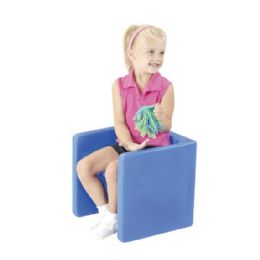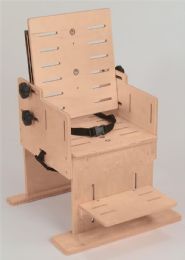.jpg&newheight=260&quality=80)









.jpg&newheight=260&quality=80)
What Are the Benefits of Specialized Pediatric Seating?
Specialized seating and positioning systems are a daily necessity for children and young adults with physical disabilities.
Specialized seating allows a physically challenged child to sit, play, learn, eat, bathe and simply enjoy time with his or her family, with both comfort and safety.
Pediatric seating systems offer a range of functionality and support. While some are designed to be adjustable according to varying heights, weights, and degree of support and positioning required, others are meant for a specific age, size, and/or degree of head and body support needed.
Many pediatric seating systems today will ‘grow’ and adjust with your child, giving you several years of use. Most manufacturers also pay attention to making these seats aesthetically pleasing to children, using bright colors and patterns. Materials are generally waterproof or water-resistant and easy to clean.
A variety of seating systems offer a wide range of options and accessories to enhance user comfort. These options can be added, usually at an additional cost over and above the base price, and can include:
● Fixed vs. adjustable lateral head support
● Abduction blocks (to position muscles correctly)
● Undercut seating (for tight hamstrings)
● Types of foot rests
● Different types of seat belts, seat and back cushions, and foot rests
What Types of Special Seating Are Available?
Aside from seating systems that offer full-body support, there are products that serve other more specific needs.
There are seating products designed to help children integrate more seamlessly into school settings. For example, seats designed specifically to fit under school tables enable children to sit with their peers and participate more fully in classroom activities.
Soft-sided cube and horseshoe shaped seats give children the physical support and stability they need, yet allow them to relax into a soft chair, much like any other member of the family would do during “down” time.
There are even chairs that use vibroacoustic therapy. This therapy converts music into tactile sensations that are transmitted through the soft chair. Vibroacoustic therapy has been shown to promote relaxation in non-verbal, restless, and agitated children, including those with autism.
Who Uses Special Pediatric Seating?
Any child who presents with a physical disability can benefit from some form of special seating.
The range is wide, and can include children with:
● Cerebral palsy – these children may need support for low muscle tone and strength, rigidity, or muscle contractions
● Scoliosis
● Muscular dystrophy
● Spina bifida
● Any clinical condition with weakening of the torso muscles
How Do I Go About Choosing the Right Seating System?
Identifying and purchasing the best pediatric seating products for your child can be a daunting task, largely because of the range of factors to be considered. These include:
● Your child’s height, weight and age
● Degree of need for postural and head support
● Purpose for which the chair will be used (school, home, travel, therapy), and whether one chair or seating system can meet several of these needs
The wealth of options out there also can be overwhelming. You will have choices about:
● Type of seat (angled, sacral support, ramped cushion)
● Type of harness (how much support does your child need?)
● Support and exercise for legs and hips (hip guides, thigh guides, leg abductors)
and many more.
The best thing you could possibly do is work with your child’s occupational therapist. They are well equipped to put together a seating plan for your child that will meet his/her present needs, along with recommendations for future usage.
Hulet Smith, OTR/L
Rehabmart Co-Founder & CEO
jh